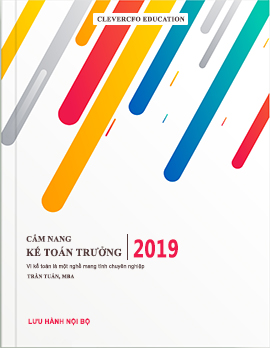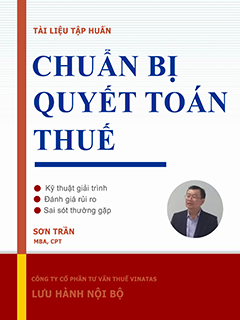Accounting Dictionary – 54 – OPE
OAC is On Approved Credit.
O&M is an acronym for either Operations & Maintenance or Operations & Management.
OBJECT CODE designates the type of expense or revenue to be charged to an account.
OBJECT COST is the total cost of producing an item: direct cost (labor & material) + overhead cost = Total Object Cost.
OBJECTIVE is a statement that is written in terms of specific measurable time-based and verifiable outcomes that challenge the organization to be more responsive to the environment to achieve the desired goals. Dependent upon usage, GOALS are general in nature, while OBJECTIVES are specific, measurable and time-based. In some organizations, the meanings for GOAL and OBJECTIVE are reversed.
OBJECTIVITY PRINCIPLE states that accounting will be recorded on the basis of objective evidence. Objective evidence means that different people looking at the evidence will arrive at the same values for the transaction. Simply put, this means that accounting entries will be based on fact and not on personal opinion or feelings.
OBLIGATION, in business, is a legal duty to pay or do something.
OCCUPANCY COST is any cost or charge incurred by a tenant pursuant to its lease, such as rent, operating expense increases, parking charges, moving expenses, remodeling costs, etc.
OCF is Operating Cash Flow.
OCOR see OPPORTUNITY COST OF REVENUE.
OEM is an acronym for Original Equipment Manufacturer.
OFA is Oracle Flexible Architecture or Oracle Financial Accounting.
OFF-BALANCE SHEET ASSET is an item representing a resource of the entity or something that is projected to have future economic value. It is a positive indicator of the entities financial position even though it is not contained within the balance sheet.
OFF-BALANCE SHEET FINANCING is a method of obtaining funds through a long-term non-cancelable lease that is accounted for as an operating lease. The lease does not meet the criteria of a 'capital lease'. This being the case, the present value of the lease obligation in not included in the lessee's balance sheet.
OFF-BALANCE SHEET LIABIILITY is an item not reported within the body of a financial statement as a liability that may require future payment or services, e.g., litigation, renegotiated claims within a government contract, and guarantees of future performance.
OFF-BOOK PARTNERSHIP is a type of blind trust. It offers some advantages over the traditional methods of capital procurement. In some cases there is a fatal lack of transparency (e.g. Enron) that allows off-book partners to hide debts, pump profits, launder money and enrich insiders, but ultimately bankrupting the company and stripping assets from its employees’ pension funds. See BLIND TRUST.
OFFER PRICE see ASK PRICE.
OFFICIAL INTEREST RATE, normally, is the rate of interest charged by the government or traders within the money market, e.g., federal funds rate and bank repurchase agreement (repo rate).
OFFSET is: a. In banking, the deduction by a debtor from a claim or demand of a debt or obligation. Such an offset is based upon a counterclaim against the party making the original claim. Example: Seller makes a claim or files a lawsuit asking for $20,000 from Debtor as the final payment in purchase of a restaurant; as part of his defense Debtor claims an offset of $10,000 for alleged funds owed by Seller for repairs Debtor made on property owned by Seller, thus reducing the claim of Seller to $10,000; b. in accounting, the amount equaling or counterbalancing another amount on the opposite side of the same ledger or the ledger of another account; c. in securities, the elimination of a long or short position by making an opposite transaction. See also OFFSET ACCOUNT.
OFFSET ACCOUNT is an account that is setup for elimination of a long or short position by making an opposite transaction.
OFFSOURCE, slang, is to outsource to an offshore location to primarily save on the cost of labor. See OUTSOURCE.
ON ACCOUNT is a partial payment made towards satisfaction of a debt.
ONE-SHOTS is slang for governmental expenditures done on a one time appropriation.
ONE-WRITE SYSTEM (also known as PEGBOARD SYSTEM) is a useful system for small and home-based businesses. It captures information at the time the transaction takes place. These One-Write Systems are efficient because they eliminate the need for recopying the data and are compatible with electronic data processing if you should decide to computerize. Many small businesses rely totally on the One-Write System for simplicity and versatility. With only two pieces of paper, a check and a ledger, you get all the benefits of sound bookkeeping: accuracy, money distribution, check control, audit trail, running bank balance, and instant review.
OPEN ACCOUNT is a non-guaranteed payment arrangement, e.g. similar to department store credit. Goods are purchased and delivered without payment. Future payment for delivered goods is dependent on the good faith of the purchaser.
OPEN ALLOTMENT is where there is no restriction as to an amount that may be taken from that which is being allotted.
OPEN-BOOK CREDIT is a form of trade credit in which sellers ship merchandise on faith that payment will be forthcoming.
OAC is On Approved Credit.
O&M is an acronym for either Operations & Maintenance or Operations & Management.
OBJECT CODE designates the type of expense or revenue to be charged to an account.
OBJECT COST is the total cost of producing an item: direct cost (labor & material) + overhead cost = Total Object Cost.
OBJECTIVE is a statement that is written in terms of specific measurable time-based and verifiable outcomes that challenge the organization to be more responsive to the environment to achieve the desired goals. Dependent upon usage, GOALS are general in nature, while OBJECTIVES are specific, measurable and time-based. In some organizations, the meanings for GOAL and OBJECTIVE are reversed.
OBJECTIVITY PRINCIPLE states that accounting will be recorded on the basis of objective evidence. Objective evidence means that different people looking at the evidence will arrive at the same values for the transaction. Simply put, this means that accounting entries will be based on fact and not on personal opinion or feelings.
OBLIGATION, in business, is a legal duty to pay or do something.
OCCUPANCY COST is any cost or charge incurred by a tenant pursuant to its lease, such as rent, operating expense increases, parking charges, moving expenses, remodeling costs, etc.
OCF is Operating Cash Flow.
OCOR see OPPORTUNITY COST OF REVENUE.
OEM is an acronym for Original Equipment Manufacturer.
OFA is Oracle Flexible Architecture or Oracle Financial Accounting.
OFF-BALANCE SHEET ASSET is an item representing a resource of the entity or something that is projected to have future economic value. It is a positive indicator of the entities financial position even though it is not contained within the balance sheet.
OFF-BALANCE SHEET FINANCING is a method of obtaining funds through a long-term non-cancelable lease that is accounted for as an operating lease. The lease does not meet the criteria of a 'capital lease'. This being the case, the present value of the lease obligation in not included in the lessee's balance sheet.
OFF-BALANCE SHEET LIABIILITY is an item not reported within the body of a financial statement as a liability that may require future payment or services, e.g., litigation, renegotiated claims within a government contract, and guarantees of future performance.
OFF-BOOK PARTNERSHIP is a type of blind trust. It offers some advantages over the traditional methods of capital procurement. In some cases there is a fatal lack of transparency (e.g. Enron) that allows off-book partners to hide debts, pump profits, launder money and enrich insiders, but ultimately bankrupting the company and stripping assets from its employees’ pension funds. See BLIND TRUST.
OFFER PRICE see ASK PRICE.
OFFICIAL INTEREST RATE, normally, is the rate of interest charged by the government or traders within the money market, e.g., federal funds rate and bank repurchase agreement (repo rate).
OFFSET is: a. In banking, the deduction by a debtor from a claim or demand of a debt or obligation. Such an offset is based upon a counterclaim against the party making the original claim. Example: Seller makes a claim or files a lawsuit asking for $20,000 from Debtor as the final payment in purchase of a restaurant; as part of his defense Debtor claims an offset of $10,000 for alleged funds owed by Seller for repairs Debtor made on property owned by Seller, thus reducing the claim of Seller to $10,000; b. in accounting, the amount equaling or counterbalancing another amount on the opposite side of the same ledger or the ledger of another account; c. in securities, the elimination of a long or short position by making an opposite transaction. See also OFFSET ACCOUNT.
OFFSET ACCOUNT is an account that is setup for elimination of a long or short position by making an opposite transaction.
OFFSOURCE, slang, is to outsource to an offshore location to primarily save on the cost of labor. See OUTSOURCE.
ON ACCOUNT is a partial payment made towards satisfaction of a debt.
ONE-SHOTS is slang for governmental expenditures done on a one time appropriation.
ONE-WRITE SYSTEM (also known as PEGBOARD SYSTEM) is a useful system for small and home-based businesses. It captures information at the time the transaction takes place. These One-Write Systems are efficient because they eliminate the need for recopying the data and are compatible with electronic data processing if you should decide to computerize. Many small businesses rely totally on the One-Write System for simplicity and versatility. With only two pieces of paper, a check and a ledger, you get all the benefits of sound bookkeeping: accuracy, money distribution, check control, audit trail, running bank balance, and instant review.
OPEN ACCOUNT is a non-guaranteed payment arrangement, e.g. similar to department store credit. Goods are purchased and delivered without payment. Future payment for delivered goods is dependent on the good faith of the purchaser.
OPEN ALLOTMENT is where there is no restriction as to an amount that may be taken from that which is being allotted.
OPEN-BOOK CREDIT is a form of trade credit in which sellers ship merchandise on faith that payment will be forthcoming.









